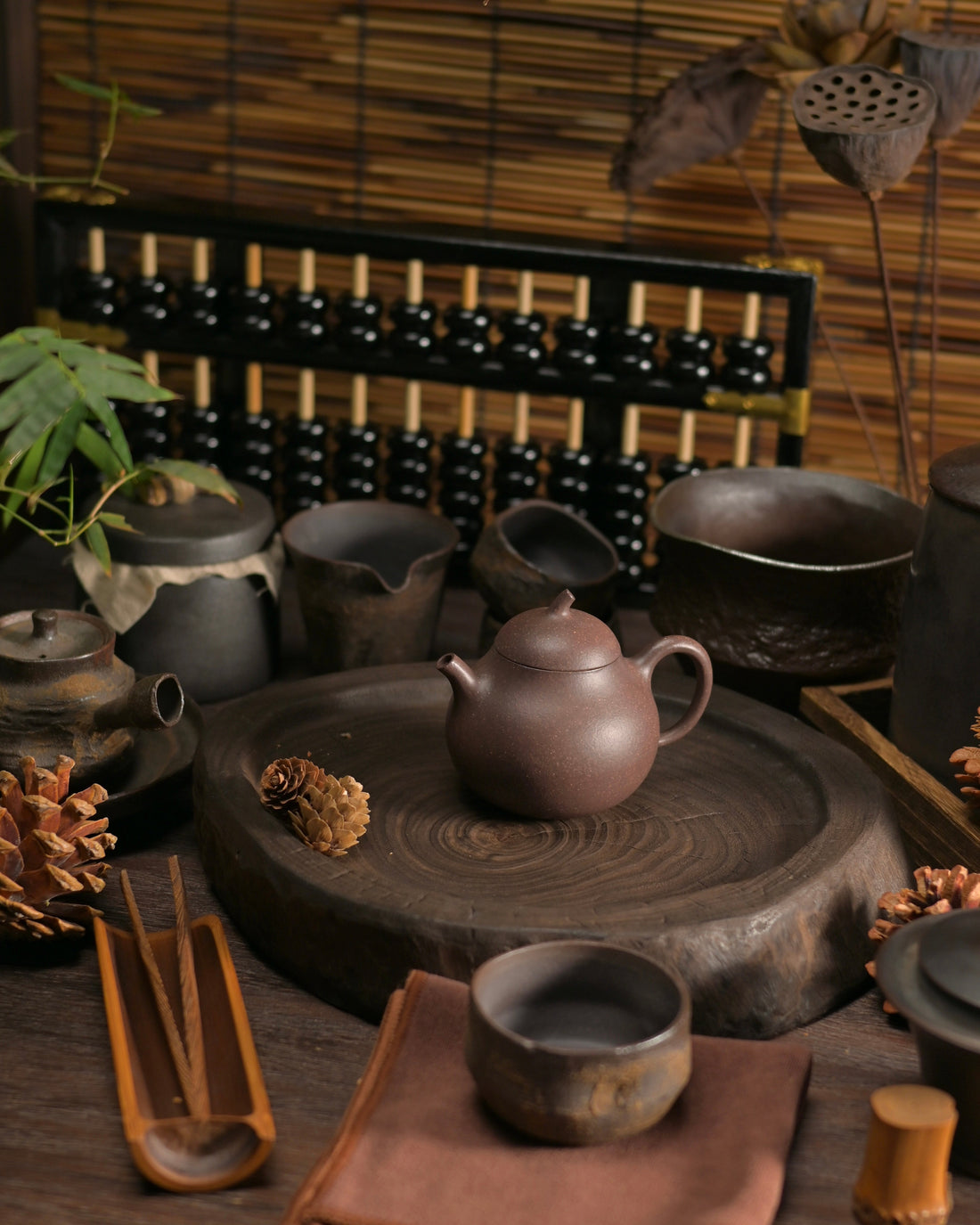
Yixing Zisha (Purple Clay) Teapots "Fully Handmade" vs. "Semi-Handmade"
In the world of Yixing zisha (purple clay) teapots, there is an ongoing debate about the distinction between "fully handmade" and "semi-handmade" pieces. However, this distinction is often misunderstood and, in many ways, a misleading concept. Let’s explore why the divide between fully handmade and semi-handmade Yixing teapots is more of a myth than a reality.
1. No Fundamental Difference in Craftsmanship
Whether a Yixing teapot is labeled as fully handmade or semi-handmade, there is no essential difference in the quality or artistry of the final product. Both methods require skilled craftsmanship, meticulous attention to detail, and a deep understanding of the clay’s properties. The distinction lies primarily in the tools and techniques used during the shaping process, not in the value or functionality of the teapot.
2. The Blurred Line Between Tools and Molds
The use of molds and tools in Yixing teapot making has always been a part of the craft. Historically, artisans have employed various aids to achieve precision and consistency in their work. The idea that "fully handmade" teapots are made entirely by hand, without any tools or molds, is a modern misconception. In reality, the boundary between handmade and tool-assisted production is fluid and often indistinguishable.
3. Historical Use of Molds
Throughout the history of Yixing zisha teapot making, molds have never been excluded from the production process. Molds were introduced to enhance efficiency and consistency, allowing artisans to focus on the finer details of their craft. Far from diminishing the value of the teapots, molds have played a crucial role in making these exquisite pieces accessible to a wider audience.

4. The Purpose of Molds: Solving Productivity Challenges
The use of molds is fundamentally about improving productivity without compromising quality. Molds enable artisans to create teapots that are both functional and beautiful, while also meeting the demands of a growing market. Whether a teapot is made with the help of molds or entirely by hand, the artistic vision and skill of the artisan remain the most important factors.
5. Practicality in Tea Brewing
When it comes to brewing tea, the distinction between fully handmade and semi-handmade teapots is negligible. Both types of teapots are equally capable of enhancing the flavor and aroma of tea, thanks to the unique properties of Yixing clay. The choice between the two ultimately comes down to personal preference, rather than any significant difference in performance.

The debate over fully handmade versus semi-handmade Yixing zisha teapots is largely a pseudo-concept. Both methods rely on the skill and creativity of the artisan, and both produce teapots of exceptional quality. Rather than focusing on labels, tea enthusiasts should appreciate the artistry and functionality of each piece, recognizing that the true value of a Yixing teapot lies in its ability to elevate the tea-drinking experience.
--End--
